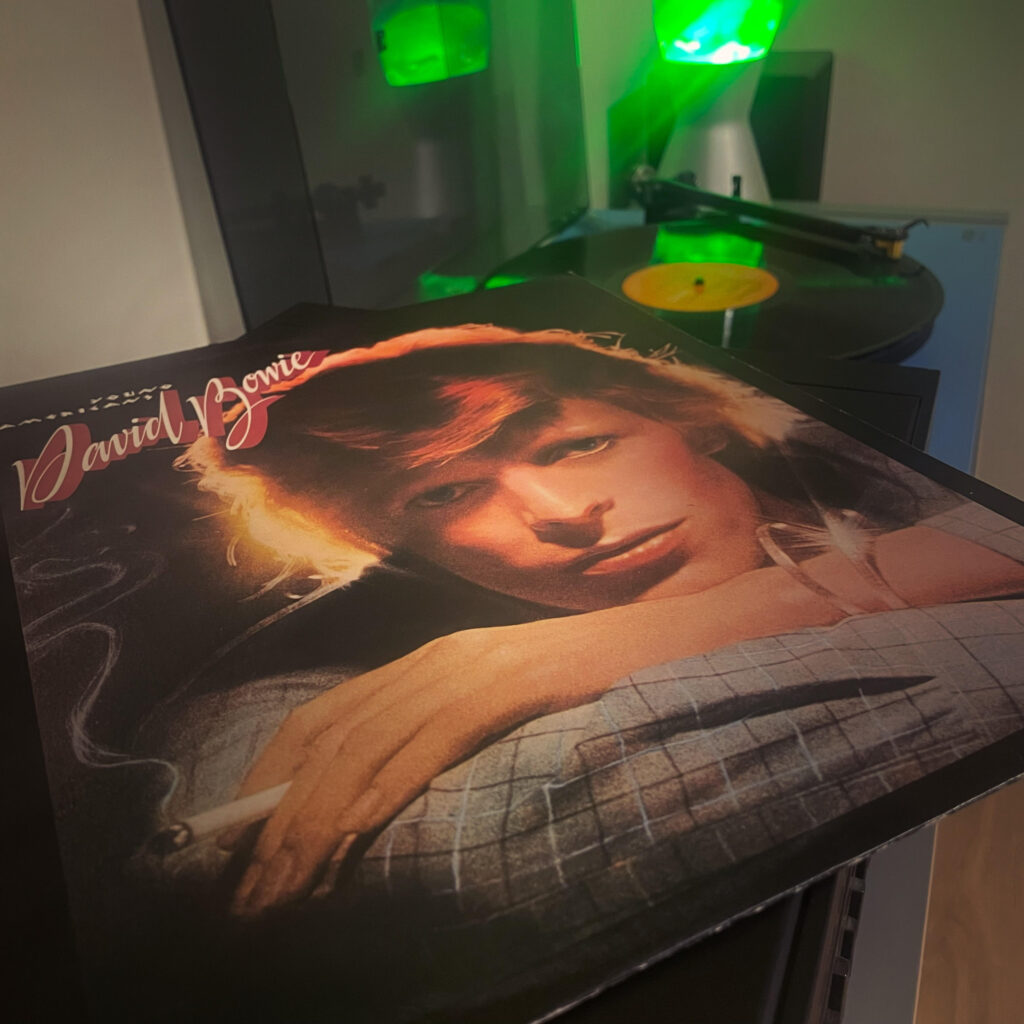In 1975, David Bowie did what he did best and shocked everyone by completely changing direction. Fresh off the theatrical dystopia of Diamond Dogs, he abandoned glam rock for the smoky soul clubs of Philadelphia, emerging with Young Americans, an album that bewildered fans and critics alike. Was it cultural appropriation or genuine artistic evolution? A cynical cash-grab or a brave reinvention? Five decades on, Bowie’s “plastic soul” period remains one of his most divisive yet fascinating chapters – a skeletal ex-pat English art-rocker uniquely attempting American R&B and somehow pulling it off. Here’s why Young Americans deserves another listen, and why it matters more than you might think in the Bowie story.

So here’s the thing about Young Americans: it’s the sound of Bowie burning down everything that made him a star and dancing in the ashes. After the glam apocalypse of Diamond Dogs and all that Orwellian dystopia, he relocated to America, got absolutely obsessed with soul music, and came back with what might be the most audacious act of cultural appropriation – or appreciation, depending on your politics, in rock history.
Released in March ’75, this is Bowie’s “plastic soul” period, a term he coined himself with typical self-deprecating wit. But don’t let that fool you. There’s nothing remotely plastic about the grooves on this record. Recorded at Sigma Sound Studios in Philadelphia – the same room where the O’Jays and Harold Melvin cut their classics, with backing from some of the city’s finest session men, this is as authentic as a skeletal English art-rock chameleon can get when he’s knee-deep in American R&B.
The title track opens proceedings like a slow-motion car crash of strings, backing vocals, and that unmistakable Bowie croon, now deeper, more soulful, dripping with a kind of desperate romanticism. “Do you remember your President Nixon?” he asks, and suddenly you’re not just listening to a pop song but witnessing Bowie’s America, all Watergate paranoia, sexual confusion, and the dying embers of the American Dream. It’s protest music for the disaffected, too fucked up to march but too aware to look away.
Then there’s “Win,” which nobody talks about enough. Luther Vandross is buried in there somewhere in the backing vocals – yes, that Luther Vandross, before anyone knew his name, and the whole thing builds like some kind of gospel testifying session that never quite commits to salvation. Bowie’s always been good at leaving you hanging, spiritually speaking.
“Fascination” came later, added for the US release, and it’s pure cocaine-and-mirrors funk, co-written with Vandross. The falsetto, the handclaps, the sheer cheek of it all – it shouldn’t work, but Bowie’s got that alchemist’s touch. He takes these American forms and filters them through his alien sensibility, and somehow it comes out sounding inevitable.
The real revelation, though, is “Somebody Up There Likes Me.” Seven minutes of strung-out funk that sounds like Bowie’s finally stopped running from something or maybe just paused for breath. The bass line alone could hypnotize you, and by the time the strings come swirling in, you’re gone. It’s the sound of 4am in a city you don’t know, with people you’ll never see again, and everything feels both meaningless and utterly vital.
Of course, there’s the Beatles cover – “Across the Universe” which some people hate on principle. Fair enough. But Bowie strips away all the cosmic whimsy and turns it into something genuinely melancholic, like he’s found Lennon’s hymn to universal consciousness at the bottom of a bottle. It’s maudlin, sure, but it fits the record’s emotional landscape perfectly.
And we can’t ignore “Fame,” can we? The funk bastard child of Bowie’s collaboration with John Lennon and Carlos Alomar, recorded during these sessions. His first proper American number one, and a deliciously bitter pill about the very celebrity machine he’d been feeding for years. The irony of becoming even more famous by singing about how much fame fucks you up wasn’t lost on anyone, least of all Bowie himself.
In the Bowie canon, Young Americans is the hinge. It’s where he stops being a glam rock prophet and starts his journey toward becoming… well, everything else. Berlin, Eno, the Thin White Duke persona, all of it begins here with this sharp left turn into soul. Some fans never forgave him for it and saw it as betrayal. But that’s always been Bowie’s genius he never gives you what you expect, and just when you think you’ve got him figured out, he’s already three moves ahead.
The album’s not perfect. It’s occasionally overwrought, sometimes too slick for its own good, and there are moments where you can hear Bowie straining against the limitations of his voice in this register. But that’s part of what makes it fascinating. You’re hearing someone genuinely stretching, genuinely trying to become something they’re not, and somehow making that transformation itself into art.
Looking back, Young Americans feels like Bowie at his most vulnerable, stripped of the sci-fi armour and glitter makeup, just a deeply weird English guy trying to make sense of America, fame, and his own restless creative spirit. It’s not his best album that’s an argument for another day, but it might be his bravest and it’s undoubtedly enduring. And in an era where most rock stars were still doing the same shtick they’d been doing since 1968, that counts for something.
The plastic soul, it turns out, had more heart than most of the genuine articles.